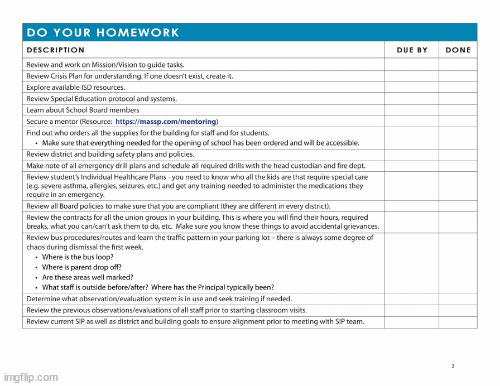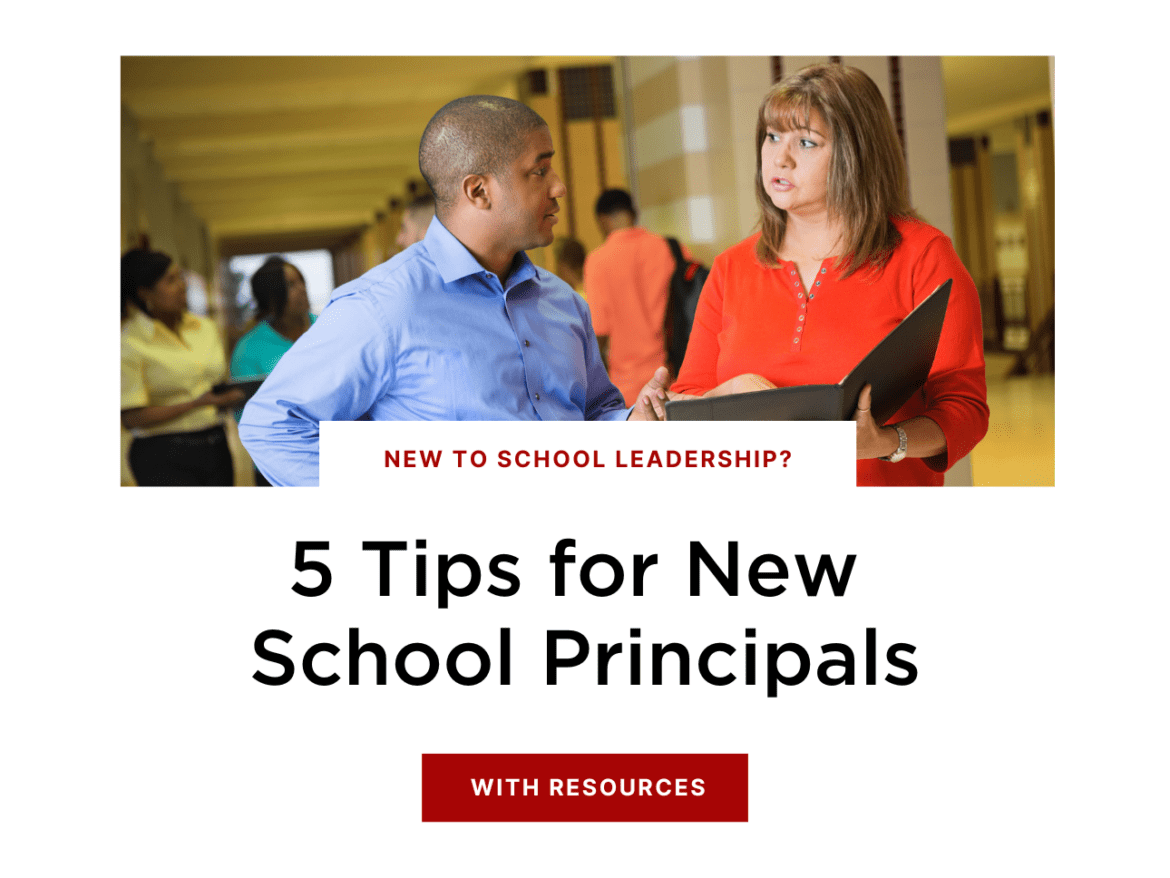Are you an aspiring principal or about to step into that role? Perhaps, you are responsible for supporting new principals? Every principal faces a mountain of new tasks aligned with district mandates. And they often have to sort through what is critical, important, and/or what can wait until later. But how do you support new principals? And if you’re a new principal, how can you get support? Earlier this year, I stumbled on a fantastic Facebook group that discusses a variety of relevant topics. Let’s take a moment to explore some of the top topics, tips for school leaders, and resources shared in preparation for your leadership journey. Then, I’ll share the Facebook group so you can join in on the discussion.
- Take time during the evening to unplug from work.
- Observe, listen, and learn. Avoid making changes right away.
- Own your mistakes, and offer a sincere apology.
- Schedule time for one-on-one meetings with your team.
- Give yourself time to think about decisions.
Tip #1: Your First 90 Days
When I applied for a Career and Technology Director position, I came up with a 90-day list of tasks. It’s not a bad idea to take that list with you to an interview and showcase what you imagine your first 90 days in a new role will be like.
I love this spreadsheet of the first 90 days in a new school:

Principal’s Checklist: 90-Day Plan
Tip #2: Empower the Chain of Command
When you first land in a role, it’s easy to want to solve every problem that you run across. But to lead with empowerment, it’s important to affirm your chain of command, that is to empower the people who are responsible as first responders to campus personnel. These people are in leadership roles and their responsibility is to resolve situations before they get to you.
Success of a leader is not how strong your team is while you are leading. Success is how strong your team is able to be in the absence of leadership.
One example is that of a principal who learned this lesson.
I was an assistant principal and principal in a school with over 1300 secondary students for 6 years.
My biggest mistake was not adhering to the line management roles. I always had my door open to teachers, parents and also students. At the time, I thought this was the best approach.
I have now moved on to another school and have changed my view. I feel I undermined managers and senior teachers with my open door approach.
Now, I have adopted what I should have adopted before – anyone should have to see a current line manager and, if necessary, the current assistant principal before me. Nothing should to come to me before this happens.
I felt I had to solve everything after moving up the ranks. In reflection, I disempowered others and added to my crazy workload
How are you managing the monkey, supporting other people’s work?
Tip #3: Celebrate Growth
“I asked each staff member to write two glows from the year on leaves and one grow on a rock,” said one principal. This is what they came up with:

Isn’t that amazing? Glows and grows might be described in this way:
The idea of “glows and grows” is to boil a great deal of information down to a relatable level.
A “glow” is a bright spot we should call out as a strength and continue to nurture. A “grow” is an area where, if we focus on improving, we stand to make important gains. I didn’t want to anchor our thinking around challenges, but rather places where we can make great gains by growing and improving. (source)
What’s more, be sure to check out Mike Alpert’s collection of two-minute inspiring videos. Use these to enhance your staff communications.
Here are my top five favorites from Mike’s list (TIP: Grab a box of tissues):
- Be a Mr. Jensen (Clint Pulver)
- How to Stop Holding Yourself Back (Simon Sinek)
- Colorado Coach of the Year Will Baird on Moments of Dopeness
- Positively Shift Your Community’s Culture
- Full-Time Classroom Teachers on What Matters Most
What are your favorites? What lessons could you and your team get from these? Here’s an alternate list, although there may be some duplication.
Tip #4: Read a Book
From Leaders Eat Last to The IT Factor: Discover and Unleash Your Own Unique Leadership Potential, there is a wealth of leadership books to read. Some recommend Leverage Leadership (read MyNotes series on this text). Others suggest Ken Blanchard’s The One Minute Manager Meets the Monkey.
What I find curious is that the book you choose reflects what you perceive as your biggest growth area. If it’s time management, Blanchard’s book may be the one for you. Or, if you expect staff management issues, Crucial Conversations might be the best pick. Take some time to reflect on what YOUR biggest area of growth needs to be, then plan your course of study accordingly.
Getting a leadership book group going isn’t a bad idea. Here are a few more suggestions from the group:
- Dare to Lead (Brene Brown)
- Trust-Based Observations (Craig Randall)
- What Great Teachers Do Differently (Todd Whitaker)
- Shifting the Monkey: The Art of Protecting Good People From Liars, Criers, and Other Slackers (Todd Whitaker)
- Jon Gordon books
- The Together Leader (Maia Heyck-Merlin)
- The Power of Moments (Dan Heath, Chip Heath)
- Street Data: A Next-Generation Model for Equity, Pedagogy, and School Transformation (Shane Safir, Jamila Dugan)
- Know What You’re FOR: A Growth Strategy for Work, An Even Better Strategy for Life (Jeff Henderson)
What books would you include on this bookshelf?
Tip #5: Be a Change Agent, an Instructional Leader
One tip that often goes unstated is, “Focus on being an instructional leader rather than a transformational one.”
Activities associated with instructional leadership had a greater impact than those associated with transformational leadership.”
(Source)
The climate and culture of a school mediate the principal’s impact on learning (Source). We know that different kinds of leadership are more effective than others. For example, Hattie’s research points out that transformational leadership differs from instructional leadership.
Reminder: John Hattie says that any instructional strategy has an impact on learning. The average impact on learning of any strategy is 0.40. Anything greater than a 0.40 effect size accelerates student growth in a calendar year.
What are the effect sizes for these two types of leadership? Transformational leadership has an effect size of 0.11. Instructional leadership has an effect size of 0.42.
What activities do researchers associate with instructional leadership?
- Engaging in classroom observations
- Interpreting test scores with teachers
- Focusing on instructional issues
- Ensuring a coordinated instructional program
- Being highly visible
- Communicating high academic standards
- Ensuring class atmospheres are conducive to learning
If principals can adopt these behaviors that speed student growth, shouldn’t they? Researchers and reformers say, “Yes.”
The Facebook Group
Where can you find these and other resources? Be sure to visit The Principal’s Desk Facebook group. You will be sure to find resources to support aspiring or new principals.

